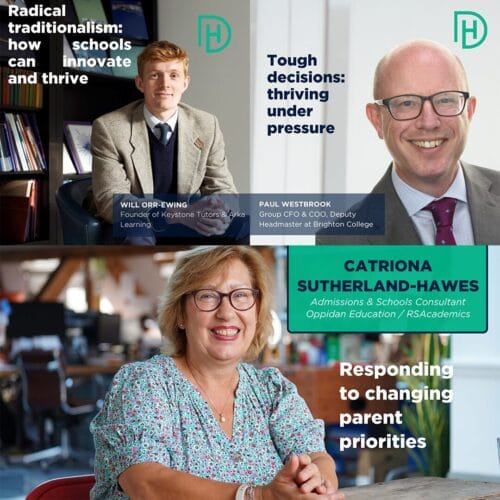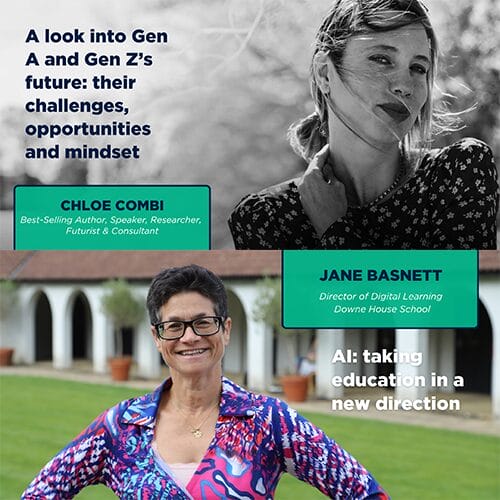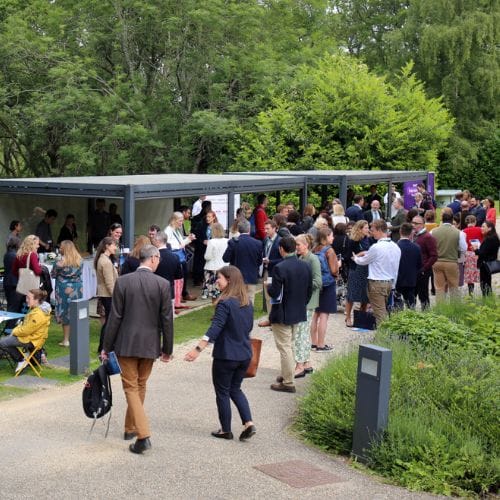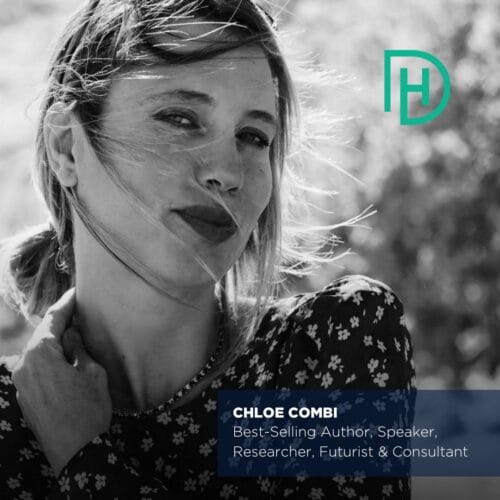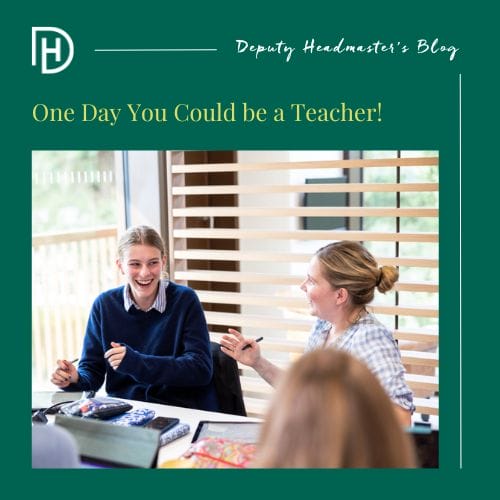
Each Monday, all 560 Downe House pupils gather in our Performing Arts Centre for a Whole School Assembly. Each term, a new theme is announced – and this term’s is Creativity.
I led the first Whole School Assembly for the Summer Term and began by asking the pupils what that word – creativity – brings to their minds.
Perhaps, I suggested, it is the amazing show of talent we saw at the end of last term in House Dance and House Gymnastics? Perhaps it is the wonderful artwork on display at Founder’s Weekend? Maybe it’s the amazing Drama and Music that is performed so regularly here at Downe. Or perhaps it is their favourite music, or film.
Or maybe, I suggested, creativity is a word that makes them nervous.
I wondered if the girls think of creativity as a positive and wonderful thing, but sometimes worry that they might not be a creative person. Perhaps, I suggested, they think that only a talented elite can ever be truly creative.
I felt like this when I was a teenager. I am the youngest of four, and – much as I love them – my three elder siblings are (frankly!) annoyingly talented in music, art and drama.
So, I told all the Downe girls that if they had ever occasionally felt a little inadequate in the face of very talented people, this assembly may be for them…
I went on to explain my belief that most creativity comes not in the form of some amazing and unique talent; rather, it comes in a much more low-key, but nonetheless very powerful form.
Creativity, in my view, is much more about how we, both individually and collectively, use our imaginations to solve problems…
I told the girls that I like this definition of creativity from the Encyclopaedia Britannica:
Creativity is the ability to make or otherwise bring into existence something new, whether a new solution to a problem, a new method or device, or a new artistic object or form.
I then shared with the girls three examples of how creativity helps to solve problems.
The first comes from a new film – not a blockbuster, but it was nominated for an Oscar. Perfect Days focuses on the life of Hirayama, who works as a toilet cleaner in Tokyo, Japan. He leads a humble existence and has no specific talents. He lives in a tiny, simple home and each day he follows what seems to be a dull and monotonous routine as he drives around the city cleaning various public lavatories.
Not much happens in the movie, but it becomes clear that far from being bored and depressed, Hirayama finds great joy and beauty all around him. How?
Simply by being very observant to the world around him and by appreciating what he has rather than what he does not have. He loves to watch light beaming through trees during his lunch break; he rescues maple tree seedlings to nurture them in his tiny apartment; he reads, and he notices and appreciates the kindness of people around him; he takes great pride in his work, even though others feel it is demeaning.
Hirayama looks at the world with his eyes – but sees with his heart.
We learn that he may have had a privileged and wealthy past, but for reasons that are not explained, he rejected this in favour of a simpler existence.
By the end of the film, Hirayama is seen as a highly creative person who has used his imagination to extract purpose, joy and beauty from his daily routines.
My second example of how creativity can take unusual forms is inspired by the actress Audrey Tautou who shot to fame playing the part of the Parisian waitress Amélie Poulain in a brilliant film, called Amélie, which came out back in 2001.
By the way – later this term, the Drama & Dance Department will stage our very own production of Amélie. I can’t wait!
Well, without giving too much away, Amélie is a shy, introverted and quirky young woman – in many ways totally unremarkable, and a bit like Hirayama.
Amélie lives alone but finds happiness in simple pleasures like dipping her hand into grain sacks, cracking crème brûlée with a spoon, and skipping stones.
One day, however, almost by accident, she makes a great decision. She decides to use her creative imagination and mischievous personality to change the lives of those around her for the better.
She helps to lift her father out of a deep depression.
She starts a romance between two people who she knows like each other but daren’t do anything about it.
She brings happiness to someone who is struck blind.
She manages to solve these and other people’s problems and make them so much happier by using her imagination, creativity and wit.
My final example is a simple but remarkable tale which was in the newspapers over the holidays. Russ Cook had been suffering from mental health issues, gambling addiction, and alcoholism for some years. He had started to think he had no skills or talents and he was depressed. He hit rock bottom – yet, quite suddenly, he found a new solution to his problem.
Russ has now become known as ‘The Hardest Geezer’ for running the entire length of the African continent, from the tip of South Africa to the top of Tunisia. It took him 352 days to run the 16,000km route through 16 countries, raising over £700,000 for charity.
Russ had one simple but creative idea to solve his problems: by completing this amazing challenge, he is now heralded as a hero, and he has put his bad experiences behind him.
I finished the assembly by telling the girls that I am now at a stage of life where, if I’m honest, I probably won’t achieve a Grade 8 in a musical instrument. I doubt I’ll ever take the lead in a Shakespeare play. I don’t think I will ever wow anyone with a piece of art or by singing a beautiful solo.
But that’s fine! Because these things are just one form of creativity.
The examples of Hirayama, Amélie and The Hardest Geezer show that creativity does not always come in the form of a talent passed to a lucky few who are either born with it or have the self-discipline to work on a skill until they are an expert in it.
They are admired as highly creative people simply because they took a positive and proactive approach to problems that lay before them. They show us that creativity is a mind-set, or a way of thinking, that is available to all of us. They also show us that if we use our creativity with courage and kindness, we will bring happiness and joy to ourselves and those around us.

Mr Matt Godfrey
godfreym@downehouse.net

